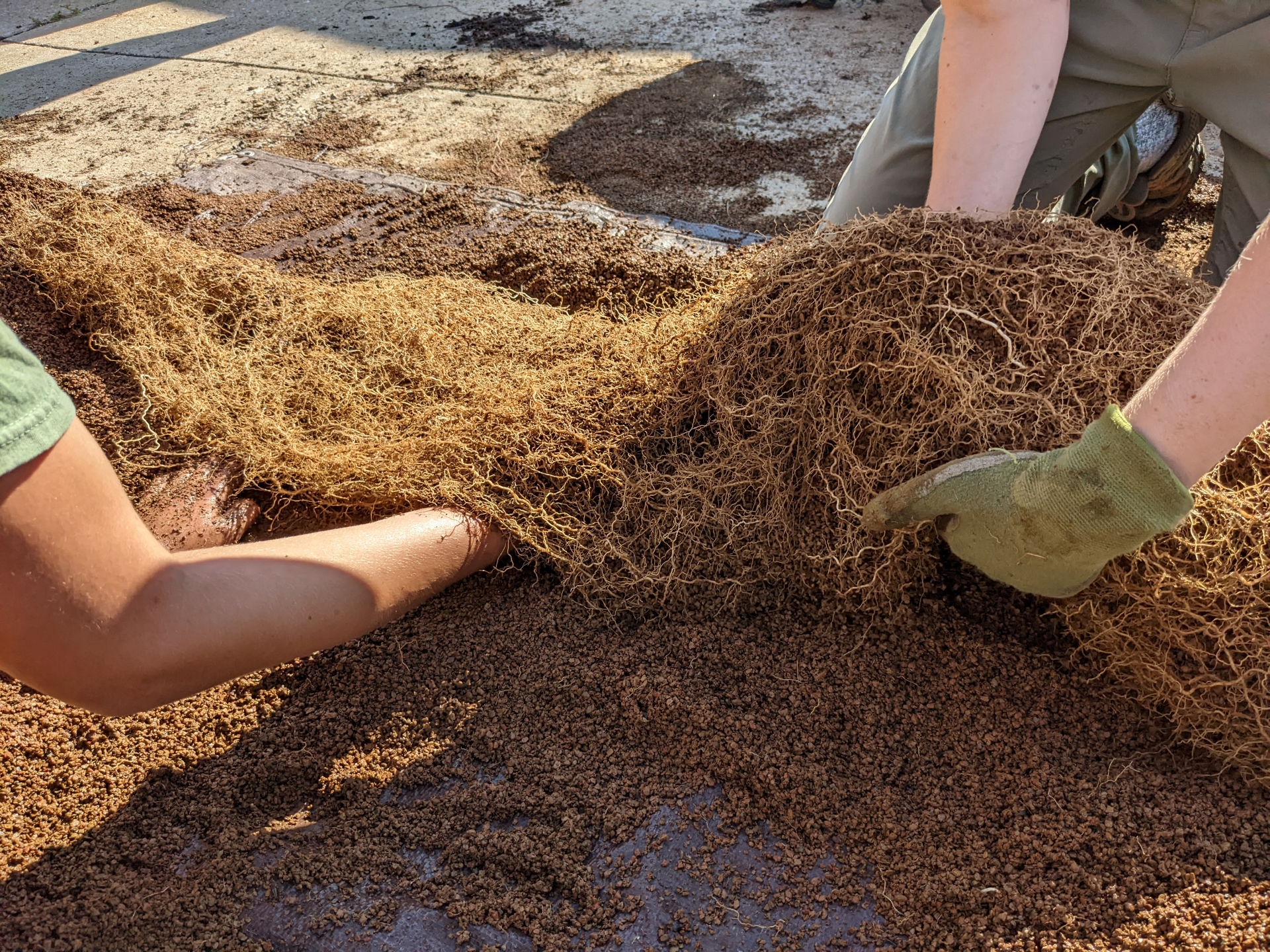Prairie Roots
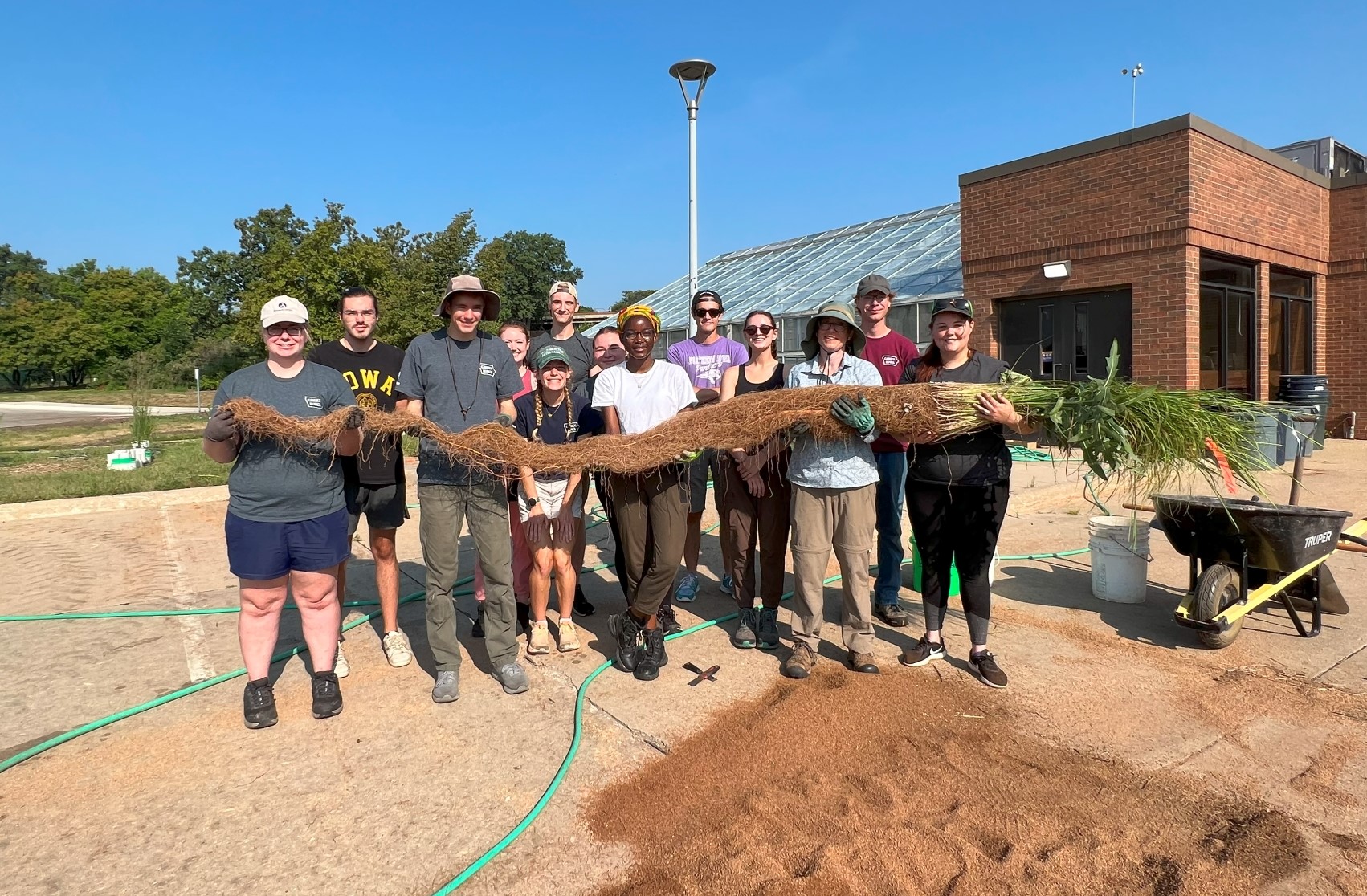
The goal of the Prairie Roots Project is to help the public achieve a deeper appreciation for the important functions of native perennial roots in today’s rural and urban landscapes. To achieve this goal, prairie roots are produced and preserved for display in educational facilities across Iowa and the North American prairie region.
Hidden deep underground, the massive root systems of prairie plants often extend deeper into the soil than the stems that rise above it. En masse, these densely tangled roots provide a variety of ecosystem services. Strategic use of prairie plants in the landscape slows runoff, reduces soil loss, lessens the severity of flooding, and rebuilds the structure of damaged soil. But like the roots themselves, these benefits often go unnoticed.
The Tallgrass Prairie Center uses 10-foot-deep pots to grow massive prairie root specimens. We have distributed them to over 30 nature centers, museums, schools, and Natural Resources Conservation Service offices, and developed interpretive materials. We also produce life-size banners with plant top and root (approximately 14' long) and ship them all over the tallgrass region and beyond.
- Ecosystem Services
Whether in agricultural or urban landscapes, parks, or roadsides, perennial prairie roots provide the following services:
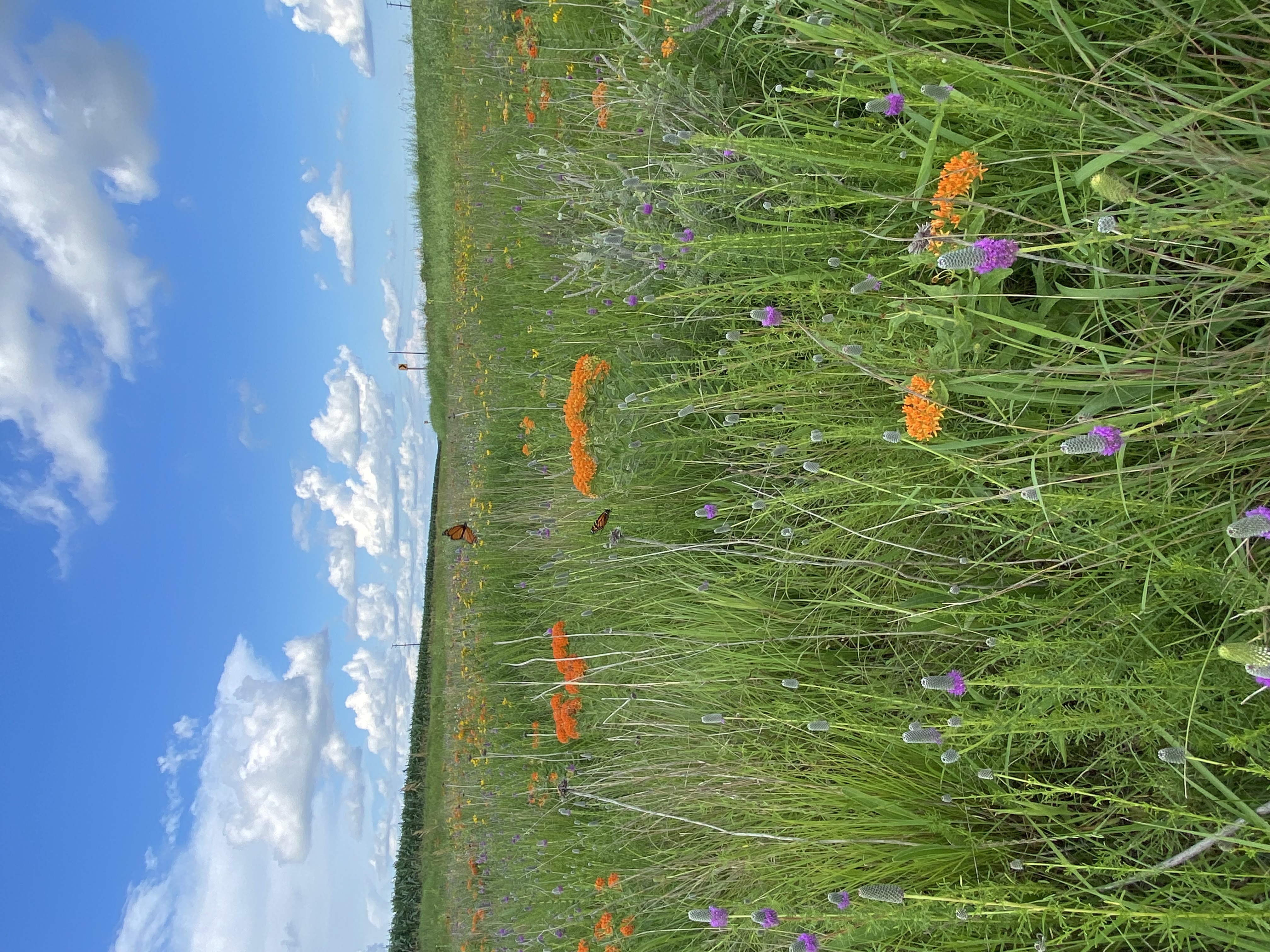
- Superior erosion control — Large, perennial prairie root systems create year-round soil “anchors.” This is particularly notable in a state dominated by annual row crops, where topsoil lacks adequate protection much of year and has almost no protection during the rainy spring season.
- Increased rainfall and runoff infiltration — Healthy, diverse root communities improve soil structure, adding underground air spaces and absorbent organic matter. As a result, water more easily percolates into the soil rather than flowing across the landscape. This helps reduce flooding and keeps sediment out of waterways.
- Invasive weed control — Dense, underground mats of tangled prairie roots are tough competition for invading weeds.
- Carbon sequestration — Mature, undisturbed prairies store more carbon below ground than forests can store above ground.
- Nutrient reduction — Actively growing prairie roots take up nitrogen leaching through the soil from crop fields higher on the landscape.
The Value of Prairie Roots in Roadsides
All of the ecosystem services listed above are important along roadways, but especially those that slow runoff and improve infiltration. Ditches exist to move water. They catch runoff from adjacent crop fields, urban landscapes, and the roadbed itself. When this water moves too quickly through the ditch into waterways, flooding and erosion occurs. By anchoring ditch soil and improving its absorbency, some of that water and soil stays in place.
- How We Produce Root Specimens
Preserving intact prairie roots starts by growing the plants in specialized pots. A “big pots” facility was constructed for this purpose at the University of Northern Iowa in 2009–10 with a grant from the Living Roadway Trust Fund (LRTF).
The Big Pots Facility
- The sleeves: Sleeves consist of 10’ long sections of 12” diameter PVC pipe, buried vertically.
- The pots: Pots consist of 10’ long sections of 10” diameter PVC pipe, sliced lengthwise, then held together with hose clamps and duct tape. The pots are inserted in the 12” sleeves.
- The rooting medium: Pots are filled with Turface®, a crushed-clay material typically used on baseball fields.
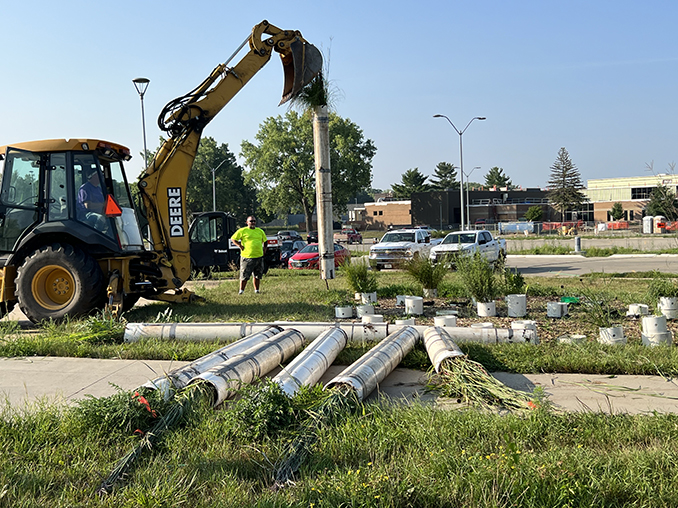
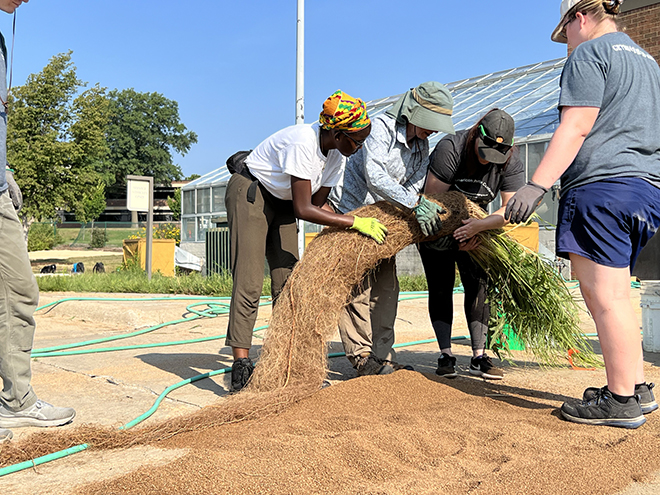

The Process
- Prairie plugs are planted in the big pots.
- A fertigation system (fertilizer + irrigation) keeps the plants fed and watered.
- After two to three seasons, the pots are pulled out of the ground with a backhoe lift, lifted onto a screen table, and split open.
- Roots are washed and labeled, then soaked in a glycerine-acetone-ethanol solution (2:1:1) for one week.
- Preserved roots are then hung to air dry.
- We continually experiment with new methods to improve the quality of the specimens.
The People
Until 2015, the Big Pots facility was the responsibility of a graduate student in the Department of Biology. With support from the Living Roadway Trust Fund, the following grad students maintained the facility and coordinated the harvest and preservation of the prairie roots. Beginning in 2015 the project was coordinated by TPC staff.
- 2009–2010: Julia Wynia and Bree Castle (design, planning and construction of facility)
- 2010–2011: Biology PSM Ecosystem Management class
- 2011–2012: Biology PSM Ecosystem Management class
- 2012–2014: Carmen Pellish, Biology MS student
- 2014: Jessica Riebkes, Biology MS student
- 2015–2017: Greg Houseal, TPC Natural Selections program manager
- 2018: Laura Fischer Walter, TPC Native Plants technician with assistance from Esther Edgerton and Kate Sinnott, UNI biology majors
Preserved prairie root specimens — produced at the Tallgrass Prairie Center — are currently on display in several states across the tallgrass region. Click here for information on purchasing a root.
On occasion, Iowa's Living Roadway Trust Fund sponsors roots for display at in-state educational facilities. Recipients of these LRTF-funded roots are below. Click to see images of their displays.
Prairie roots on display
See how others across the state and nation display their prairie roots!
Lesson plans for roots
Check out 4th–8th grade lesson plans generated by the TPC!
Order a root banner
These life-size banners display sharp images of prairie roots; click below to learn more.
